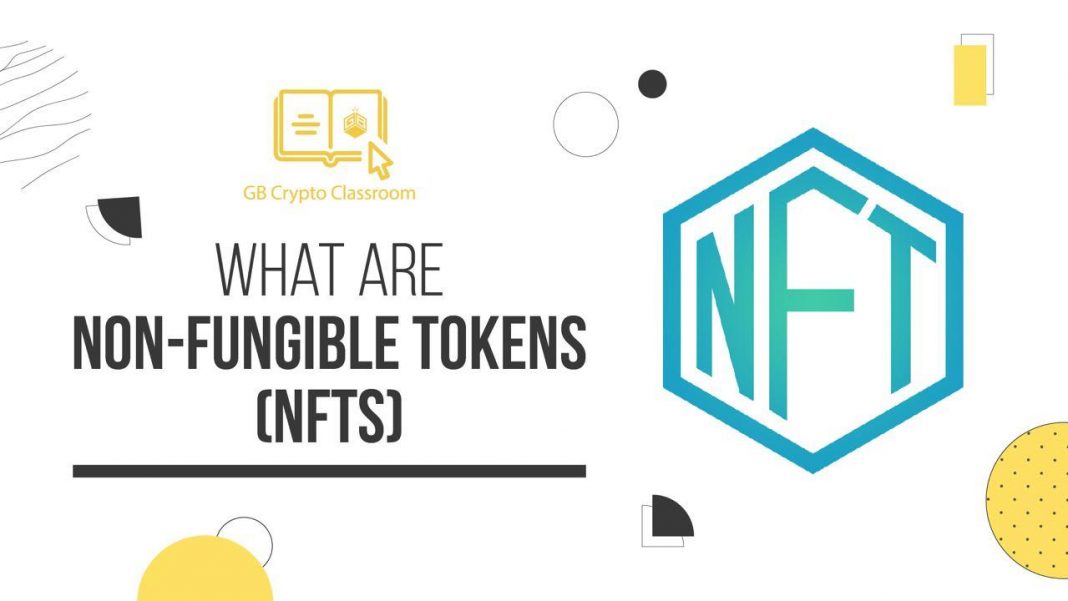 Non-Fungible Tokens (NFTs) have become a hot topic in the digital world, revolutionizing the way we perceive and trade assets. These unique digital assets are stored on a blockchain, making them verifiable, indivisible, and distinguishable from one another. Unlike cryptocurrencies such as Bitcoin or Ethereum, which are fungible and can be exchanged on a one-to-one basis, NFTs are one-of-a-kind and cannot be replicated or replaced.
Non-Fungible Tokens (NFTs) have become a hot topic in the digital world, revolutionizing the way we perceive and trade assets. These unique digital assets are stored on a blockchain, making them verifiable, indivisible, and distinguishable from one another. Unlike cryptocurrencies such as Bitcoin or Ethereum, which are fungible and can be exchanged on a one-to-one basis, NFTs are one-of-a-kind and cannot be replicated or replaced.
The concept of NFTs revolves around the idea of owning something that holds value and cannot be duplicated. This uniqueness is what sets NFTs apart from other digital assets. Each NFT contains specific information that is stored on a blockchain, a decentralized and transparent digital ledger. This technology ensures that the ownership and authenticity of an NFT can be traced and verified at any given time.
One of the key features of NFTs is their indivisibility. While cryptocurrencies can be divided into smaller units, NFTs cannot be split. They exist as a whole entity, making them exclusive and valuable. For example, a digital artwork represented as an NFT cannot be separated into multiple pieces or shared among different owners. This indivisibility enhances the scarcity and uniqueness of NFTs, making them highly sought after by collectors and enthusiasts.
Furthermore, NFTs are distinguishable from one another, meaning that each token has its own distinct characteristics and attributes. These attributes can include the artist’s signature, the creation date, or even additional metadata that adds value and context to the digital asset. This inherent distinctiveness allows for a diverse range of NFTs to be created, from digital art and virtual real estate to music albums and virtual goods in video games.
The rise of NFTs has opened up new opportunities for creators and artists, providing them with a new digital marketplace to showcase and sell their work directly to collectors and fans. NFTs enable creators to retain ownership of their digital assets and earn royalties from future sales. This has brought about a paradigm shift in the art world, democratizing access and empowering artists to reach a global audience without the need for intermediaries.
In conclusion, NFTs are unique digital assets that are stored on a blockchain, making them verifiable, indivisible, and distinguishable from one another. With their scarcity and inherent value, NFTs have disrupted traditional notions of ownership and opened up a new era for digital collectibles and art. As the technology and market surrounding NFTs continue to evolve, it will be fascinating to witness how this digital revolution shapes the future of creativity, ownership, and the way we perceive and trade assets in the digital realm.
Characteristics of NFTs: Highlight the key features of NFTs, such as their non-interchangeability, scarcity, and provable ownership. Discuss how NFTs can represent various forms of digital content, including artwork, collectibles, music, videos, virtual real estate, and more.
In the ever-evolving world of digital assets, a new and exciting trend has emerged, captivating the attention and imagination of artists, collectors, and investors alike. Non-Fungible Tokens, or NFTs, have taken the digital realm by storm, revolutionizing the way we perceive and trade unique digital content. With their distinct characteristics, NFTs have become a powerful medium to authenticate, own, and trade a wide array of digital assets.
One of the defining features of NFTs is their non-interchangeability. Unlike cryptocurrencies that can be exchanged on a one-to-one basis, each NFT possesses its own individual characteristics and cannot be substituted for another. This uniqueness is what makes NFTs incredibly valuable, as it ensures the authenticity and scarcity of the digital assets they represent.
Scarcity is another crucial element that contributes to the allure of NFTs. Many NFTs are issued in limited quantities or even as a single edition, making them highly sought after by collectors. This scarcity factor enhances their desirability, driving up their value in the digital marketplace. Collectors and enthusiasts are drawn to the exclusivity offered by NFTs, as owning a limited edition or one-of-a-kind digital item becomes a testament to their discerning taste and status.
Furthermore, NFTs provide a groundbreaking solution to the long-standing problem of proving ownership and authenticity in the digital world. Through blockchain technology, NFTs offer a transparent and immutable record of ownership, allowing creators and buyers to establish clear ownership rights. This provable ownership not only protects artists and content creators from unauthorized duplication or distribution but also enables them to monetize their creations more effectively.
The versatility of NFTs is a key factor in their widespread adoption. NFTs can represent a vast range of digital content, transcending traditional boundaries. From digital artwork, collectibles, and music to videos, virtual real estate, and even virtual characters, the possibilities are endless. Artists can now showcase and sell their creations directly to a global audience, bypassing intermediaries and traditional gatekeepers. This democratization of the art and content industry empowers creators and provides enthusiasts with unprecedented access to unique digital assets.
In conclusion, NFTs have emerged as a game-changer in the digital asset landscape. Their non-interchangeable nature, scarcity, and provable ownership make them a highly valuable and sought-after medium for trading digital content. Whether it’s a rare piece of artwork, a limited edition collectible, or even a virtual plot of land, NFTs offer creators and collectors an exciting new way to engage with digital assets. As this innovative technology continues to evolve, the possibilities for NFTs to reshape and revolutionize the digital world are limitless.
NFTs, or non-fungible tokens, have taken the world by storm in recent years, revolutionizing the way we perceive and trade digital assets. At the heart of this phenomenon lies the underlying technology of blockchain platforms, with Ethereum being the most prominent player in the NFT space. By utilizing smart contracts, Ethereum enables the creation, ownership, and transfer of NFTs, providing a secure and transparent environment for digital artists and collectors alike.
The process of minting NFTs begins with the artist or creator uploading their digital asset onto the blockchain platform. This could be anything from artwork, music, videos, or even virtual real estate. Once the asset is uploaded, a unique token is created, representing its ownership and authenticity. This token is then stored on the blockchain, making it resilient to alteration or tampering.
To interact with NFTs, users require a digital wallet. These wallets, often provided by blockchain platforms, such as MetaMask for Ethereum, serve as a place to store, manage, and trade NFTs. Digital wallets are a crucial component of the NFT ecosystem, as they allow users to seamlessly buy, sell, and transfer their tokens. Additionally, these wallets provide a level of security by utilizing private and public key cryptography, ensuring that only the rightful owner has access to their NFTs.
One of the key elements that make NFTs unique is the metadata attached to each token. Metadata includes information such as the creator’s name, the title of the artwork, a description, and even links to additional content. This metadata not only adds value and context to the NFT but also plays a vital role in its authentication. By providing a comprehensive description and a clear history of ownership, metadata creates transparency and trust within the NFT ecosystem while safeguarding against fraud or counterfeit creations.
Authentication is a fundamental aspect of NFTs, ensuring that each token is legitimate and verifiable. The blockchain’s transparent and immutable nature, combined with the metadata, allows collectors to trace the origin and ownership history of an NFT back to its creation. This process of verification adds value and scarcity to NFTs, as it confirms their uniqueness and provenance, making them desirable and collectible.
In conclusion, NFTs have emerged as an innovative way for digital artists, creators, and collectors to engage with digital assets securely. By leveraging blockchain technology, specifically platforms like Ethereum with smart contracts, NFTs have revolutionized the ownership and transfer of digital assets. The minting process, digital wallets, metadata, and authentication mechanisms all contribute to the vibrant NFT ecosystem, providing transparency, security, and provenance to this exciting new market.
Benefits and Challenges of NFTs
NFTs, or Non-Fungible Tokens, have taken the world by storm, revolutionizing the way we perceive and trade digital assets. These unique tokens offer a range of benefits, empowering creators, and providing new monetization opportunities. However, along with their advantages, NFTs also bring forth challenges and criticisms that need to be addressed.
One of the most significant advantages of NFTs lies in their ability to empower creators with new monetization opportunities. Unlike traditional means of selling digital assets, NFTs enable artists, musicians, and content creators to directly sell their work to a global audience, eliminating the need for intermediaries. This direct connection between creators and consumers not only allows for increased revenue streams but also fosters a stronger sense of artistic independence and control.
Additionally, NFTs offer a solution to the longstanding problem of provenance and authenticity for digital assets. By utilizing blockchain technology, these tokens provide a transparent and immutable record of ownership, ensuring that the original creator of a digital asset is recognized and compensated accordingly. This newfound sense of authenticity not only benefits creators but also collectors and buyers who can now confidently invest in unique digital items.
Moreover, NFTs introduce the concept of fractional ownership, allowing multiple individuals to own a fraction of a particular asset. This innovative feature democratizes ownership, making it more accessible and affordable for a wider audience. Fractional ownership also presents the opportunity for fans and supporters to invest in their favorite artists’ work, creating a mutually beneficial relationship between creators and their community.
However, it is crucial to acknowledge the challenges and criticisms associated with NFTs. One significant concern is the environmental impact of blockchain technology. The process of minting and trading NFTs requires a considerable amount of energy, contributing to carbon emissions and exacerbating climate change. This environmental concern has sparked debates regarding the sustainability of NFTs and calls for more eco-friendly alternatives.
Copyright issues also pose a challenge in the NFT space. While blockchain technology ensures the provenance and authenticity of digital assets, it does not inherently address copyright infringement. There have been instances where artists’ work has been minted as NFTs without their consent, leading to legal disputes and questions surrounding ownership rights. The NFT community must develop mechanisms to protect creators and respect copyright laws.
Lastly, the volatility of the NFT market raises concerns for both creators and investors. The rapid fluctuation in prices can result in significant financial gains, but it can also lead to substantial losses. This unpredictability has been subject to criticism, with skeptics questioning the long-term sustainability and value of NFT investments.
In conclusion, NFTs offer exciting possibilities for creators by providing new monetization opportunities, provenance and authenticity for digital assets, and fractional ownership. However, challenges such as environmental concerns, copyright issues, and market volatility cannot be overlooked. It is crucial for the NFT community to address these challenges, ensuring the sustainable growth and acceptance of this innovative technology.
Impact and Future of NFTs: Explore the current and potential future applications of NFTs across industries such as art, gaming, sports, and entertainment. Discuss how NFTs are reshaping the way we think about digital ownership and the implications for artists, collectors, and consumers. Finally, provide insights into the evolving regulatory landscape and the long-term prospects of NFTs.
NFTs, or non-fungible tokens, have taken the world by storm in recent years, transforming the way we perceive and value digital assets. With their unique properties and blockchain technology, NFTs have found applications in various industries, leaving a lasting impact in the realms of art, gaming, sports, and entertainment. As we explore the current landscape and future potential of NFTs, it becomes evident that they are not just a passing trend but a revolutionary force that is reshaping digital ownership.
In the art world, NFTs have ushered in a new era of authenticity and provenance. Artists are now able to digitize their work and mint it as an NFT, providing a verifiable record of ownership and allowing for transparent transactions on blockchain platforms. This has opened up a world of possibilities for creators, who can now reach a global audience and monetize their digital art directly, without the need for intermediaries. Additionally, collectors are drawn to the exclusivity and rarity that NFTs offer, as each token represents a unique piece of art. This has created a thriving marketplace where artists and collectors can connect, fostering a sense of community and supporting the growth of a new artistic movement.
Gaming is another industry that has embraced NFTs with open arms. These tokens enable players to truly own in-game assets, such as virtual land, characters, or weapons, by representing them as unique digital items on the blockchain. This allows for interoperability between different games, giving players the freedom to trade, sell, or even lend their digital possessions. NFTs have also introduced the concept of play-to-earn models, where gamers can earn real-world value by participating in the virtual economy. This groundbreaking shift has the potential to revolutionize the gaming industry and create a more inclusive and rewarding experience for players.
The sports and entertainment sectors have also witnessed the transformative power of NFTs. Athletes and celebrities can now tokenize their moments, such as game-winning shots or iconic performances, creating a new revenue stream and strengthening their relationship with fans. NFTs provide a unique opportunity for fans to own a piece of their favorite sports or entertainment history, fostering deeper engagement and creating a sense of ownership and connection. As the industry continues to explore the possibilities, we can expect to see more innovative use cases and collaborations that blur the lines between the physical and digital realms.
While NFTs have gained significant traction, concerns around the regulatory landscape remain. As governments grapple with the new technology and its implications, we can expect to see evolving regulations that aim to protect consumers and ensure transparency in the market. It is crucial for artists, collectors, and consumers to stay informed about the changing regulatory landscape and adapt accordingly to navigate the NFT space responsibly. Despite the challenges, the long-term prospects for NFTs appear promising. The technology has the potential to revolutionize the way we perceive and trade digital assets, creating new economic opportunities and empowering artists and creators like never before.
In conclusion, NFTs have made a lasting impact on various industries, with their potential future applications extending beyond our current imagination. From art and gaming to sports and entertainment, NFTs have reshaped the way we think about digital ownership and have provided new avenues for artists, collectors, and consumers. While regulatory challenges persist, the long-term prospects for NFTs remain bright, offering a glimpse into a future where digital assets are valued, traded, and owned in ways we never thought possible.



